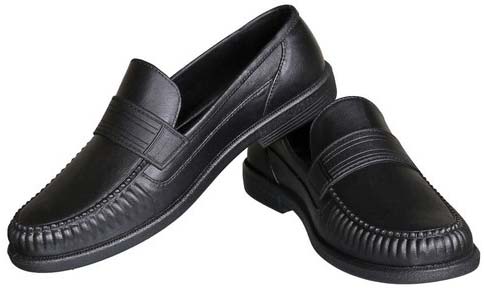Project Report For Full PVC Footwear
Introduction
Project report for full PVC footwear is as follows.
Full PVC footwear is a type of footwear that is made from Polyvinyl chloride (PVC) material. It is a type of plastic that is durable, waterproof, and resistant to abrasion, making it a popular choice for footwear in India. The PVC material is molded into the desired shape of the footwear using injection molding machines. This process ensures that the footwear has a uniform and consistent shape and size.
Full PVC footwear is popular in India due to its affordability, durability, and versatility. It is widely used in various industries such as agriculture, construction, and mining, where workers need protective and durable footwear. PVC footwear is also used in the healthcare industry, where it is used as protective gear for doctors and nurses.

Product & Application of Full PVC Footwear
PVC footwear was first made available in 1964, and it really took off in 1967. Initially, multistation plants and molds were typically imported. Even though there was a shortage of raw materials, two-station machinery and molds that were readily available locally were nonetheless used to produce more capacity.
In terms of design, full PVC footwear is available in a wide range of styles and colors. They can be designed as slip-ons, lace-ups, or with buckles, making them suitable for different occasions and purposes. PVC footwear can also be decorated with various patterns and prints, making them stylish and fashionable.
Project Report Sample On Full
PVC Footwear
Get Completely Custom Bankable Project Report
Full PVC Footwear Process of Manufacture
The moulds for the PVC Footwear to be manufactured are obtained and inserted into the machine based on the design of the sample. The PVC compound is then fed from a sopper in strip, granular, or powder form into a heated cylinder. The most prevalent kind is ceramular.
The Injection Cycle begins with the moulds being closed and locked under pressure, which can be exerted manually with hand or mechanical levers, or automatically with hydraulic or pneumatic power. When the PVC in the cylinder has been sufficiently softened by heat, it is driven forward into the mold by ram or screw action through an intermediate channel known as ‘SPRUE’ until it has cooled down to a condition of suitable firmness and the pressure in the mold has been reduced.
As a result, the time cycle can be divided into multiple stages: mold filling time, dwell time under pressure, cooling time, and mold opening time. The cooling time is frequently the longest and must be reduced, especially in small machines, as specified in the project.
Market Potential Of Full PVC Footwear
India’s footwear market was estimated to be worth US$ 13.49 billion in 2021, and from 2022 to 2027, total revenue is anticipated to increase at a CAGR of 12.83%, or roughly US$ 27.84 billion.
Expenses

Product Cost Breakup

Reveneue Vs Expenses

Market Trend

The market is dominated by unorganized players, who account for around 70% of the total market share, while organized players hold the remaining 30%.
According to estimates, there are 550 million pairs of shoes sold worldwide, of which 450 million pairs are casual shoes like Indian cultural footwear, rubber and leather slippers, sandals, etc., but not boots and shoes. The manufacturing of leather shoes, which includes exports, is expected to be 200 million pairs, accounting for a considerable portion.
Full PVC footwear, such as chappals, sandals, and shoes, is popular in the Indian market due to its low cost, durability, and simplicity of maintenance. Used PVC footwear that still retains the main raw material, PVC, can be repurposed to make more budget-friendly shoe designs. The facilities, machinery, and raw materials are all sourced locally. PVC shoes are typically lightweight and quite comfortable to wear in rainy conditions.
The Indian PVC footwear market is highly competitive, with many domestic and international players operating in the market. Some of the major players in the market include Relaxo Footwears Ltd., Liberty Shoes Ltd., Bata India Ltd., and Paragon Footwear.
According to current estimates, the capacity is 300 million pairs annually. There is potential for setting up these units employing PVC granules in combination units with PVC scrap materials in rural and underdeveloped locations.
PVC used in India went from 1131 KTA in 2006 to 1980 KTA in 2012 with a CAGR of 9.8%. The increase in production capacity from 1085 KTPA in 2006 to 1370 KTPA in 2012 occurred at a relatively slow yearly compounded growth rate of only 4%.
India imports between 42% and 43% of its yearly PVC usage due to manufacturing falling behind demand in the PVC market. India imported between 750 and 1000 KT of PVC in each of the previous two years, and it is predicted that imports will make up more than 50% of total consumption in the coming five years.
